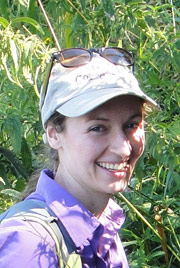#HowtoNature series: How to camp (Part Two)
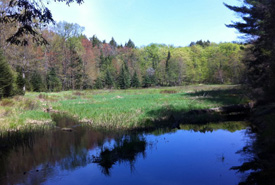
Western uplands landscape at Algonquin Provincial Park (Photo by Cara Copeland/NCC Staff)
Now that you’ve planned where to go and what to bring (see Part One) it’s time to cover what actually happens on a camping trip.
Camp setup and maintenance
When you arrive at your campsite, decide where to set up your tent. Look for an open, relatively flat area, but don’t set up too close to the fire pit or cooking area! If you have the opportunity, try practicing setting up your tent ahead of time. That way you’ll be able to work quickly if it’s raining when you arrive at camp, and you’ll know if any pieces are missing or broken (take it from someone who’s been there — you’ll feel pretty sheepish if you show up without a fly for your tent!).
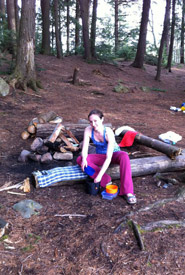
Cleaning up after a hard-earned meal. A set of nesting dishes like this one is a great space saver. (Photo taken at Algonquin Provincial Park by Jason Snell)
Food
Typically, food can be stored in your car, using a cooler for perishable items. If you don’t have a vehicle or your campground has rules against keeping food in vehicles, you’ll need to use special bear-proof containers or other means to keep your food out of reach of bears and other critters.
I recommend bringing a camp stove as the primary cooking apparatus. Almost all campsites have a dedicated campfire pit, and many also come equipped with a grate for cooking. Be sure you check the status of local fire bans if you wish to cook with open fire.
Remember —NEVER operate a camp stove or barbecue inside your tent because of the carbon monoxide emissions, not to mention the fire hazard. However, cooking under a well-ventilated tarp is fine!
It’s also a good idea to check ahead of time to see if the water at the campground is safe to drink. If not, you’ll need to either bring all your water in with you or be prepared to purify it through filtration, tablets or boiling.
Pack lots of portable snacks (I like granola bars, fruit, pitas and hummus). You can keep meals simple or go (somewhat) fancy. Just remember that it can be more difficult to regulate cooking temperatures on a camp stove or fire so now is not the time to attempt a soufflé!
Classic camp foods include hotdogs (or veggie dogs), pita pocket pizzas and, of course, s’mores! I’ve done everything from steak and corn on the cob to sweet potato curry. The key is preparation – the more you do at home (e.g. dice vegetables, pre-mix spices) the easier it will be at the site.
When cleaning up after a meal remember not to leave food scraps around — you can be sure the critters will find them! Dispose of your dirty dishwater according to campground regulations.
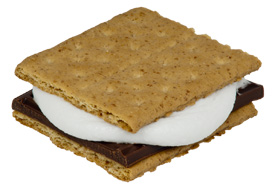
A S'mores made with a half a Hershey's chocolate bar, Nabisco graham crackers and a marshmallow. (Photo by Evan Amos, Wikimedia Commons)
S'mores recipe
Graham crackers (2)
Marshmallow (1)
Square of milk or dark chocolate (1)
Roast a marshmallow over the campfire until it’s golden brown. Set chocolate square on one of the graham crackers. Place marshmallow (still on roasting stick) on top of chocolate. Place second graham cracker on top of marshmallow and push down lightly as you carefully pull the stick out of the marshmallow. Enjoy the gooey goodness of this classic campfire treat!
Excursions
Depending on where you’re staying, here are just a few things you may be able to do on your camping trip:
- Take a hike: Parks often have trails of varying lengths and difficulty levels.
- Go for a paddle: Many places rent out canoes and kayaks.
- Head to the lake: Whether it’s swimming, building sandcastles or exploring the shoreline – there’s something for everyone at the beach.
- Take in some culture: Learn about the area’s history by checking out local exhibits.
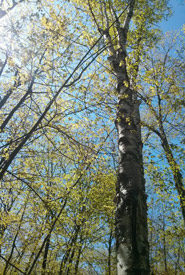
My view from the hammock on a recent trip to Awenda Provincial Park (Photo by Cara Copeland/NCC staff)
Just plain relaxing
In my opinion, the downtime is one of the best parts of camping. This is when you can take a breath, slow down, and really appreciate the fact that you’re away from the hustle and bustle of daily life. A few of my favourite ways to unwind while camping include:
- A lazy afternoon of reading in the hammock
- Playing cards or a board game at the picnic table or in the tent on a rainy day. I recommend picking games without too many small pieces!
- Sitting quietly and simply taking it all in.
- Relaxing by the campfire at the end of the day.
And that’s all there is to it! Whether you’re a novice or a seasoned pro, may you all be happy campers this summer!

